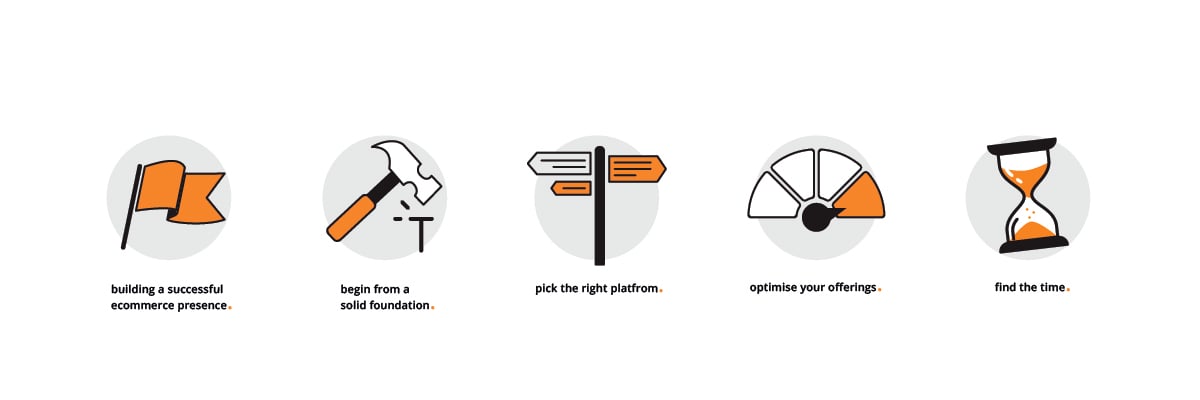By 2040 it is expected that 95% of purchases in the UK will be made via an eCommerce site. This comes alongside a flurry of popular names, such as Marks and Spencer, reducing their presence on the high street (or in the case of Maplin and Toys R Us disappearing altogether). Couple this with data showing that an average of 56% of in-store purchases are influenced by digital commerce, and it’s clear to see how big an impact online retail is having on the consumer market.The high street has seen the changes coming, reports by Mary Portas and the creation of the Great British High Street forum are both attempting to tackle the decline, attempting to return high streets to the social gathering hotspots they once were, but it is becoming increasingly obvious that being a successful name in retail means having a successful online presence.
 Building a successful eCommerce presence
Building a successful eCommerce presence
Having a successful eCommerce presence is about more than just having a good-looking website. There is plenty to consider, including traffic, optimisation and platform performance. Unless you can successfully navigate each of these issues, having an online store winds up being the equivalent of opening a new shop in a quiet road, not telling anyone you’re there and expecting to attract customers.
Begin from a solid foundation
In many cases, having an existing ‘bricks and mortar’ store can give you a big advantage when it comes to creating your online store.
There’s no reason a local shoe shop can’t potentially sell to customers in London, Paris or Sydney. So, if the offer is appealing, and you have a solid distribution channel, begin with what you know about your current customers, such as demographics, age range and average spend, and mirror this in online targeted advertising to begin building your base.
Pick the right platform
Picking the right platform for your eCommerce shop is critical to your success. Essentially making the correct decision comes down to how many products you want to stock, your expansion plans, what you want your site to be capable of doing in terms of features, and how much control you want over your design.
Picking the right platform is a critical part of defining your online strategy. The questions you need to ask are the same questions you need to answer to create a successful online strategy – what do I want the site to achieve, which audience am I targeting, how am I going to grow the business?
If you’d like to find out more take a look at our guide to selecting the right eCommerce site for you.
Optimise your offering
When it comes to optimisation the stats alone can be overwhelming: from understanding that 61% of companies run fewer than five landing page tests per month, to realising videos on landing pages can increase conversions by 86%, or that data capture forms with four fields will attract over 120% more interest than those with 11 fields.
Ensuring your site is working effectively is not a job that can be done once and forgotten about. It requires regular analysis of your web traffic and social media. Much in the same way you arrange your store in a certain layout to maximise customer browsing time and buying potential, so too do you need to constantly think about the optimisation of your website.
To easily achieve this requires a site that is flexible and allows you to easily switch up your home page, change your offers and re-order your content as well as providing the ability to perform A/B split tests and modify on-page assets while still being true to your brand guidelines.
Find the time
Unless you have the proper support around you, starting your eCommerce journey can prove a time-consuming process.
Using apps and programmes to cut down on time, such as HootSuite, TweetDeck or Sprout Social, to schedule social media posts, having a weekly, monthly and three-month plan for the site, and corresponding blogs and updates will also help to keep you on-track.
In terms of updating content and products available on the site, selecting a platform that can easily integrate with your stock system or EPOS is vital for ensuring you can keep track of inventory, and not disappoint expectant customers and reduce your admin time.
Ultimately expanding into eCommerce doesn’t have to be difficult, but what it takes meticulous planning and careful consideration to make it a success.
If you’re looking to launch your eCommerce platform, or even scale-up your online presence, then get in touch with our team today. Just fill out the form below and one of our digital team will be in touch to discuss your online requirements.




